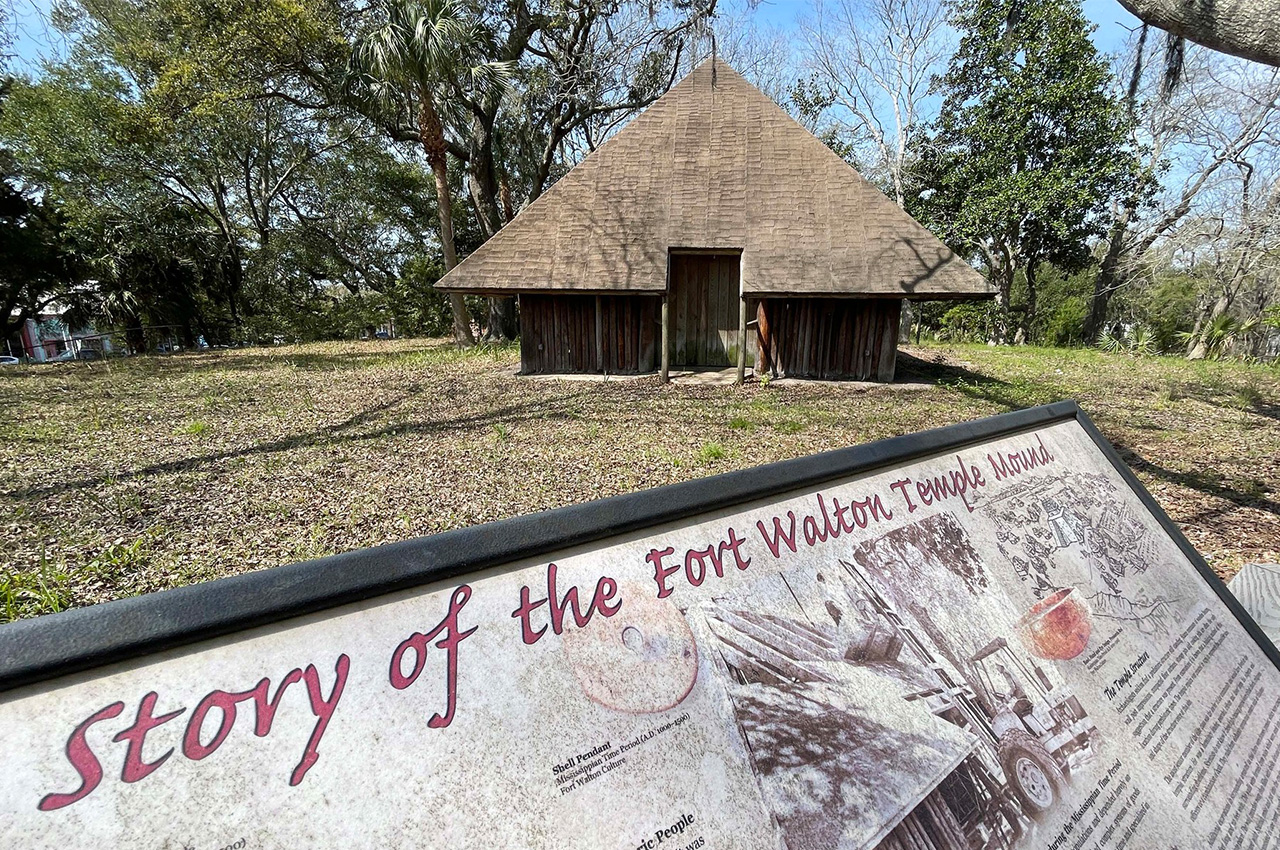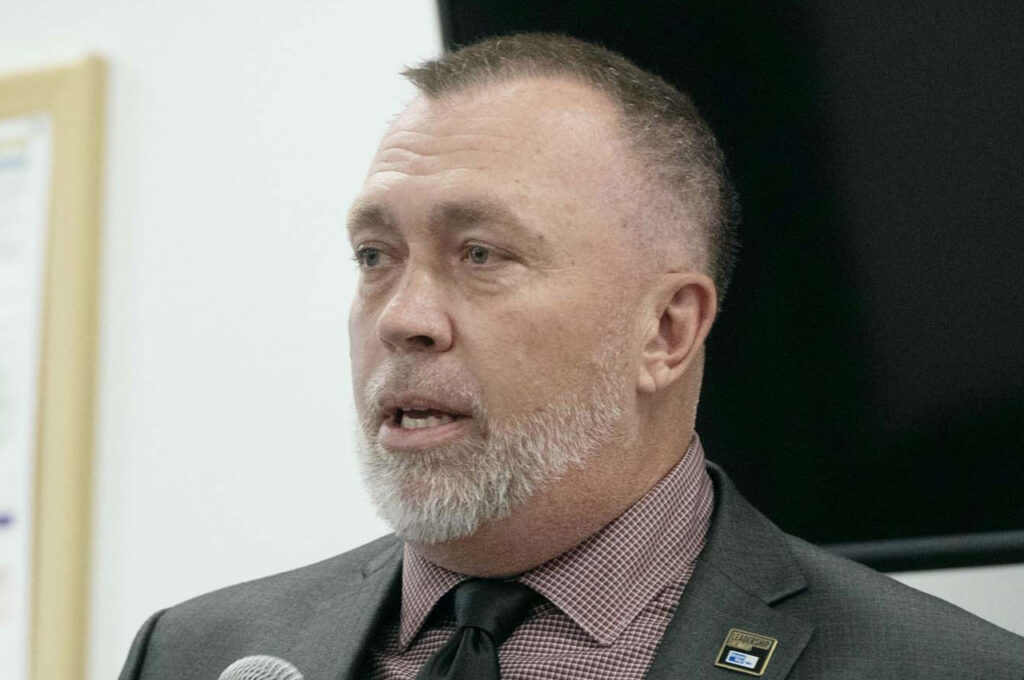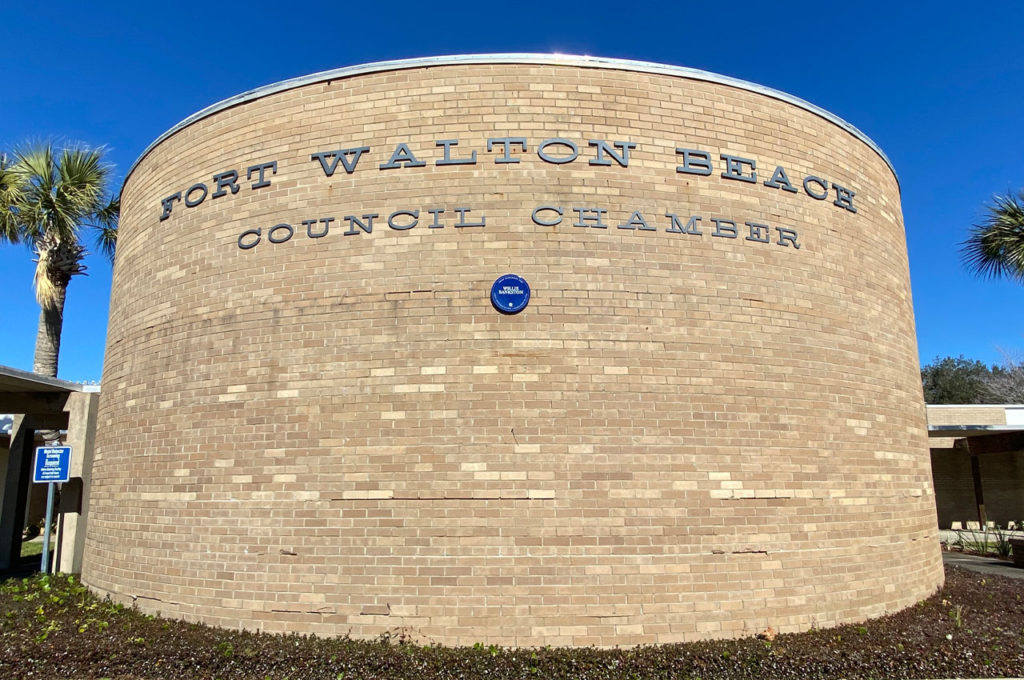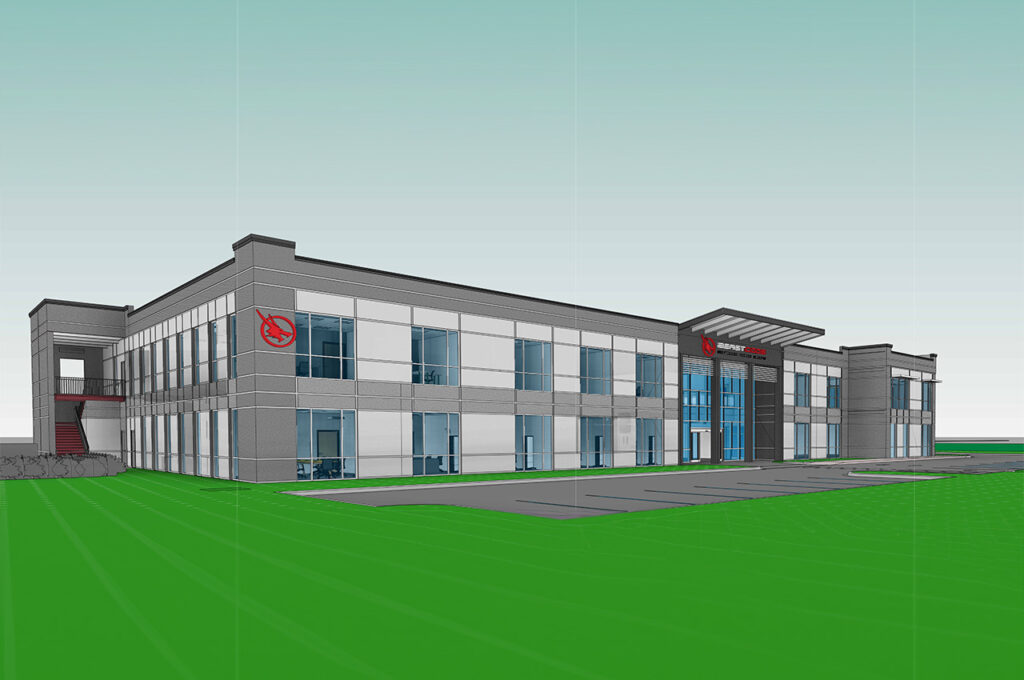Standing 17 feet tall in the heart of Fort Walton Beach, a flat-topped earthen mound holds secrets of a civilization that thrived long before European contact. This ancient structure, known as the Fort Walton Temple Mound, offers a window into the lives of Florida’s earliest inhabitants and their remarkable achievements.
“Fort Walton Beach has some of the most significant archaeological treasures in the Panhandle such as mounds, middens, and village sites,” said Gail Meyer, Museum Manager for the City of Fort Walton Beach Heritage Park & Cultural Center. “Did you know its history goes back to the earliest Native American inhabitants who lived here thousands of years ago?”
The Fort Walton Temple Mound, located outside the Indian Temple Mound Museum, is a testament to the ingenuity and organization of the Mississippian Period Mound Builders.
- Construction of the mound began around 800 A.D., with each successive leader adding height and building new temple structures atop it.
“This mound was once the center of a city, perhaps the capital of a nation that stretched from the Apalachicola River to Pensacola,” Meyer explained. “It was a ceremonial and political center, a meeting place, a rallying place for dances, games and public events.”
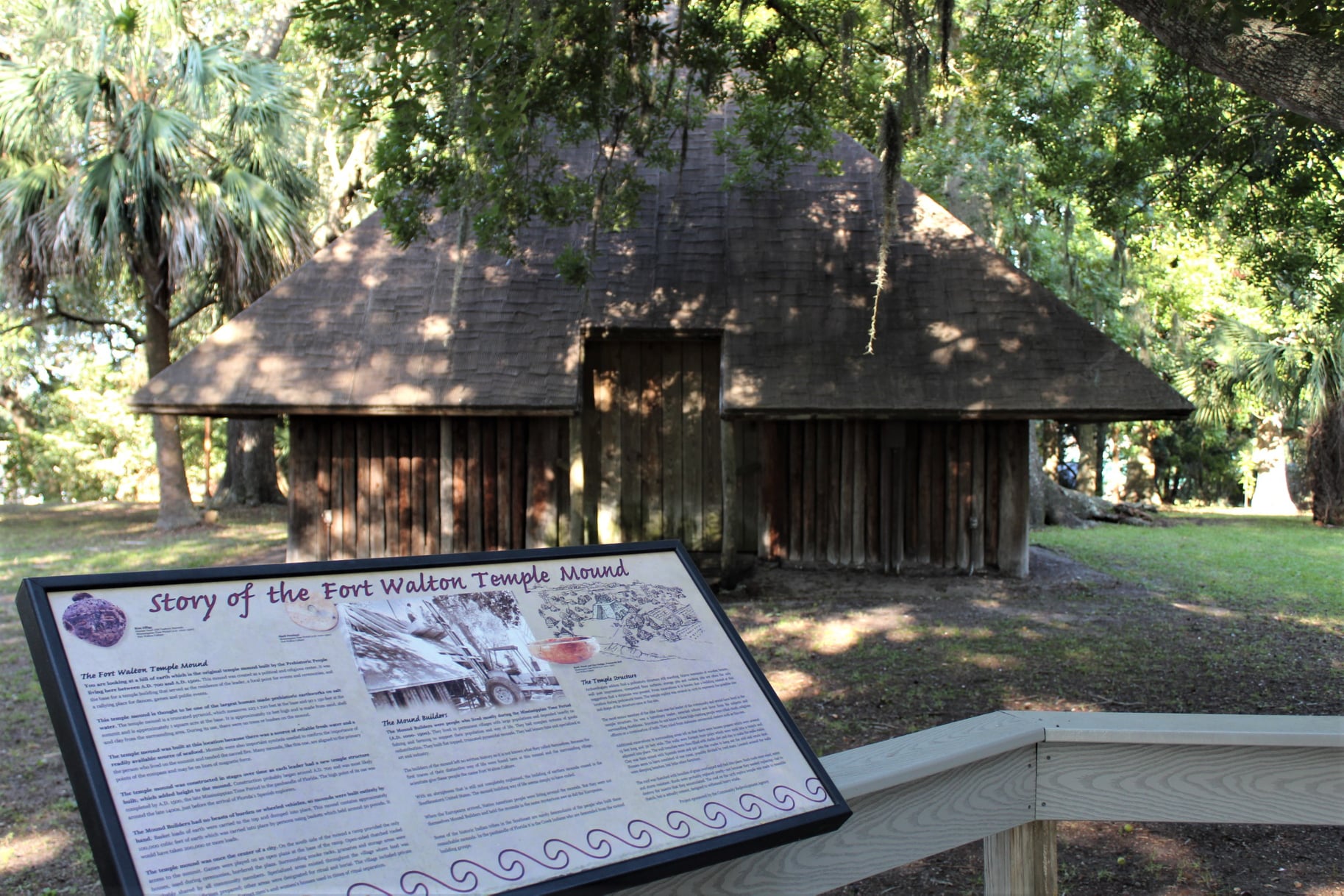
The mound’s impressive dimensions — 223 feet by 220 feet at its base and 178 feet by 135 feet at its summit — speak to the scale of the undertaking. Composed of approximately 100,000 cubic feet of sand, shell, and clay gathered from the local area, the mound was built entirely by hand.
The mound served multiple purposes for its builders. It supported an important building used as the leader’s house, a temple for religious ceremonies, and a site to direct games and public activities. It also served as a burial place for leaders.
- “During its use, there were no trees or bushes on the mound,” Meyer said. “There was an earthen ramp extending south towards the water. This was the only access to the top and the temple structure.”
The mound was not an isolated structure but the centerpiece of a bustling community. Meyer painted a vivid picture of the surrounding area: “A vast collection of buildings surrounded the plaza and spread in all directions. There were open-sided thatched roofed houses for people to live in. There were areas where activities such as basketmaking, pottery making, and stone working took place. There were areas where food was processed, and medicines were prepared. There were areas for ceremonies and for burial.”
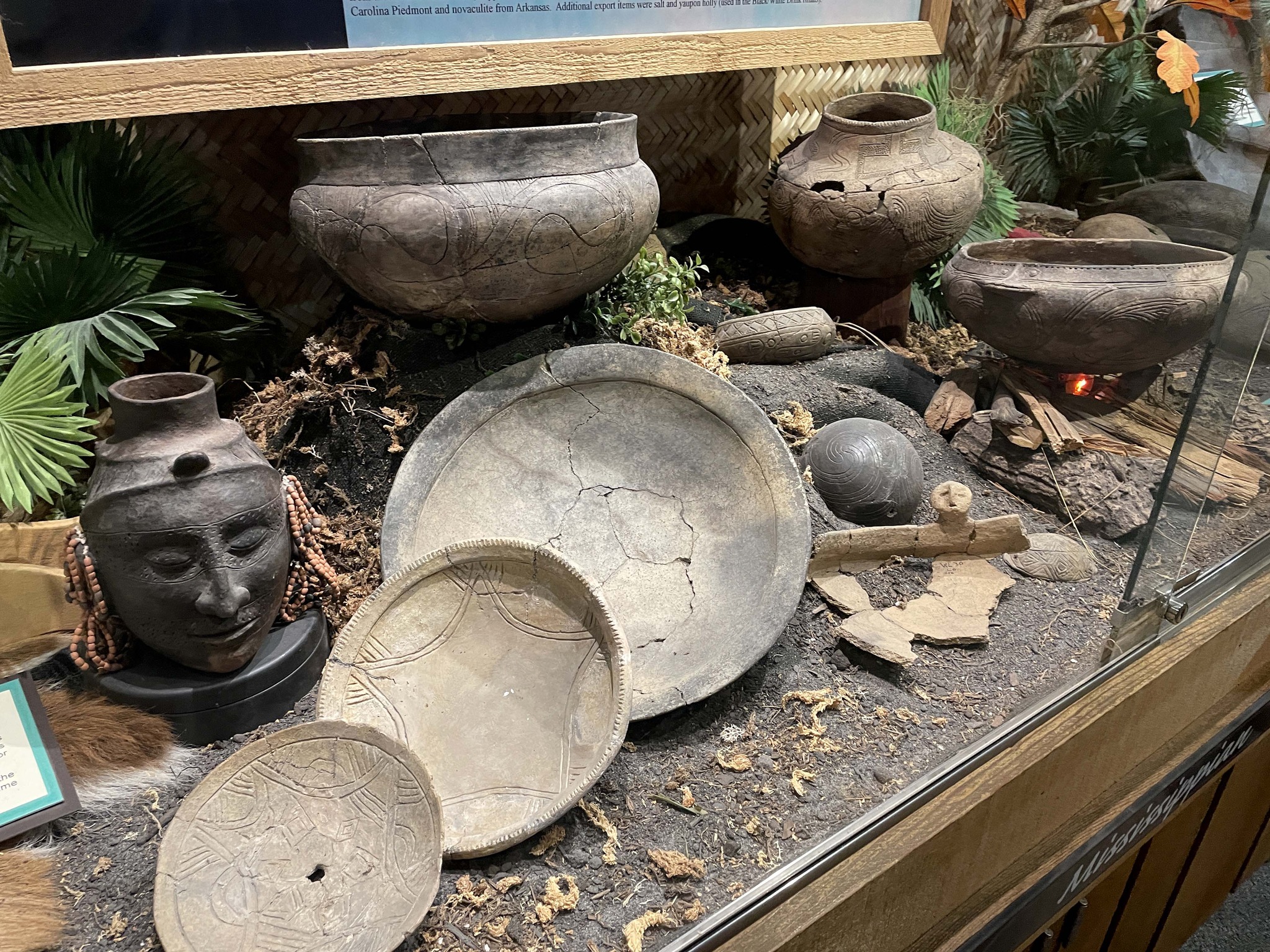
The Fort Walton Temple Mound reached its peak of activity in the late 1400s, shortly before European contact. By the time Europeans arrived in Florida, the mound had been abandoned. The fate of its builders remains a mystery, though Meyer suggested, “They probably simply left this area to join with other surrounding communities. They would become the ancestors of today’s Creek Indians.”
The significance of the Fort Walton Temple Mound extends beyond its impressive physical presence. In 1964, it was placed on the National Register of Historic Places as a National Historic Landmark, recognizing its importance to American history.
- “In 1964, the Fort Walton Temple Mound was one of only 96 places in the country so designated,” Meyer said.
The mound continues to hold cultural and spiritual importance for modern Native Americans. “The temple mound is considered sacred by modern Native Americans and has been the site of ceremonies,” Meyer explained. “It is a place where human beings lie at rest and deserves all the respect afforded a cemetery.”
The Fort Walton Temple Mound is not just a relic of the past; it offers valuable insights into the lives of Florida’s First People. These early inhabitants developed sophisticated societies and technologies long before European arrival.
“Florida before European Contact in 1500 differed in some important ways from the Florida of today,” Meyer said. “There were no drainage canals, dikes, roads, or permanent bridges. There were no cattle, sheep, pigs, or goats. There were no domestic cats, Norway rats, horses, honeybees, sugarcane, citrus, wheat, mangos, pineapples, or bananas. There were no iron tools, guns, or the wheel.”
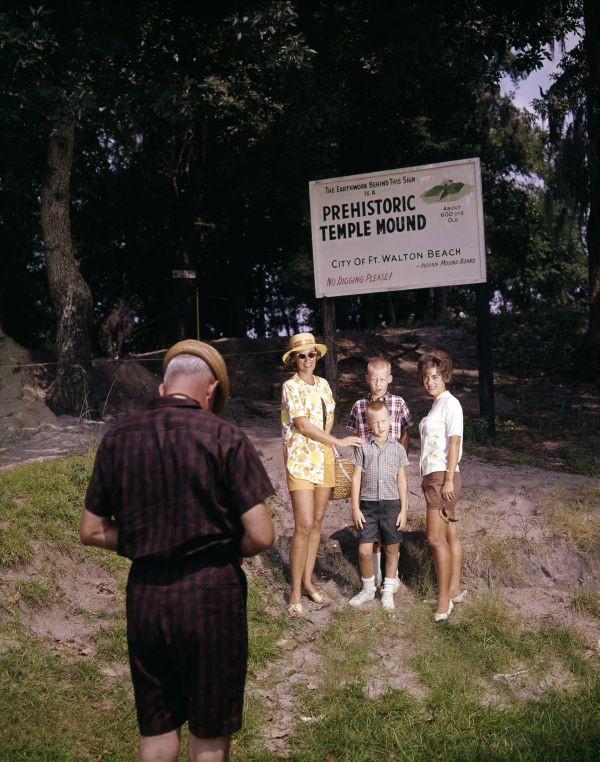
Despite lacking these modern conveniences, Florida’s First People thrived. They cultivated crops that are still consumed today and developed medicines and practices that continue to intrigue the modern world.
- “They ate small animals, fish, turtles, birds, nuts, fruits, wild plants, and shellfish,” Meyer said. “They lived in areas where firewood, water, and needed resources could be easily secured. Their time was occupied by fishing, hunting, food preparation, making household tools, building homes and canoes, traveling, trading, and raising families.”
While much of their material culture has been lost to time, some artifacts have survived, offering glimpses into their daily lives and artistic achievements. The Indian Temple Mound Museum, the first city-owned museum in the state of Florida, houses an extensive collection of these artifacts.
“These people created beautiful items of stone, bone, shell, and clay,” Meyer said. “These are the parts of their world that have stood the test of time.”
The museum’s collections reflect the heritage of the major Native American cultures in the area, spanning from the Paleoindian Period through the Mississippian Period. It serves as an educational resource for both local residents and tourists, offering exhibits, educational tours, and a museum store.
As Fort Walton Beach continues to grow and evolve, the Fort Walton Temple Mound stands as a reminder of the rich history beneath our feet. It invites us to consider the lives of those who came before us and the enduring legacy of Florida’s First People.
“The museum celebrates the technological, artistic and spiritual achievements of Florida’s First People,” Meyer concluded, emphasizing the ongoing relevance of this ancient heritage to our modern world.

